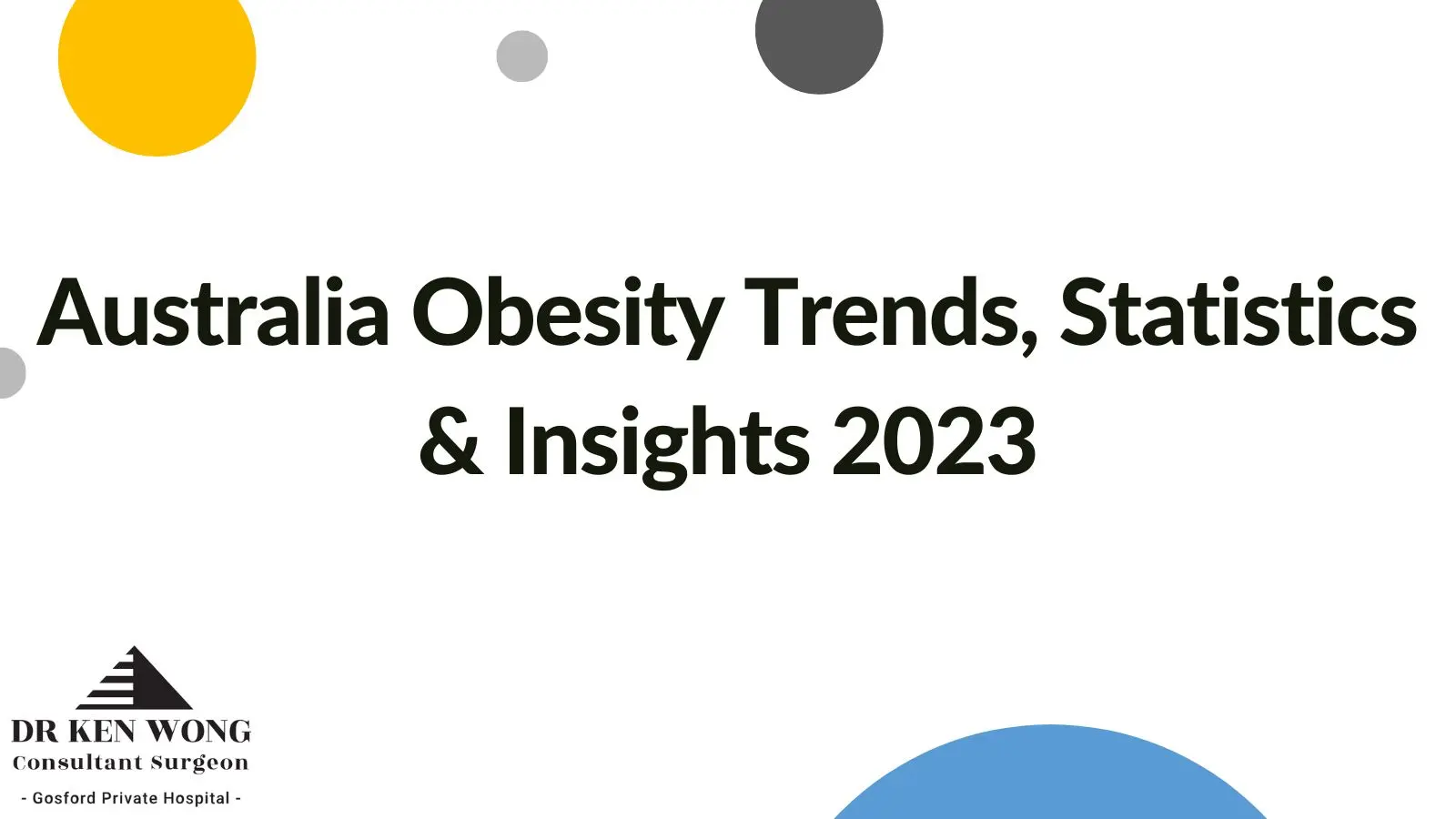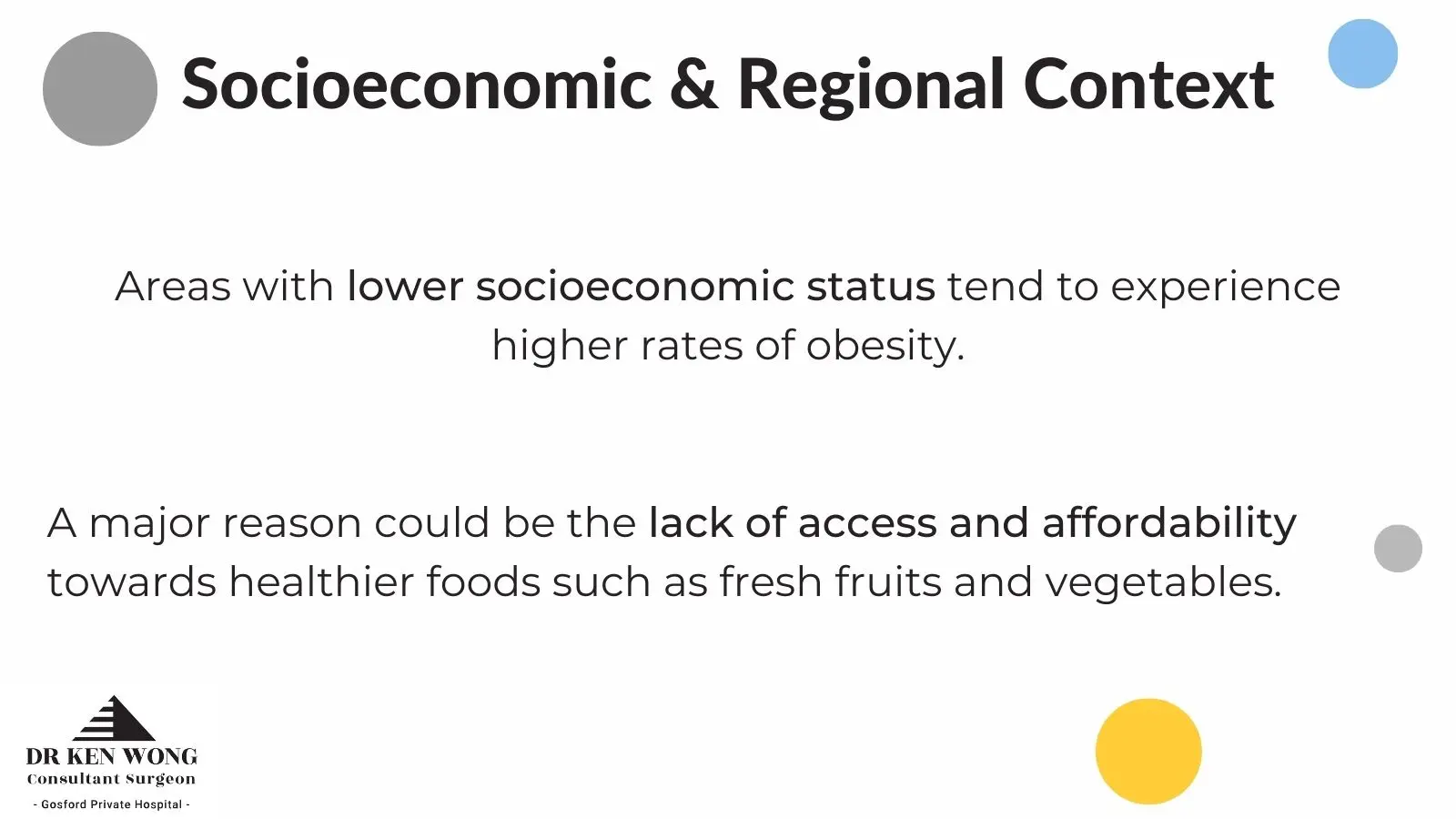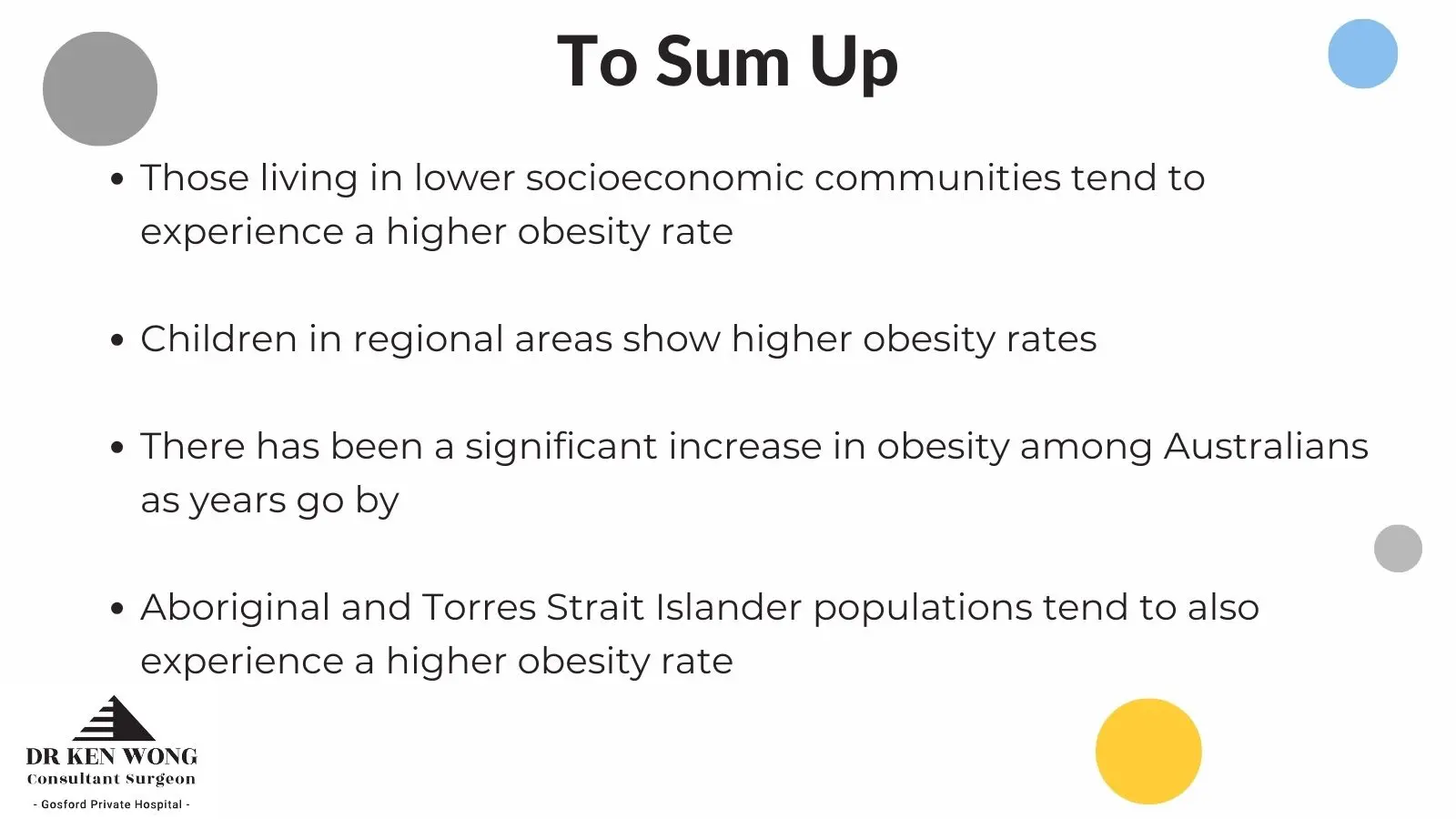
According to the latest data, more than two-thirds (66.9%) of Australia’s adult population are classed as obese or overweight. When we drill down into those numbers, men are disproportionately represented with 77% affected, as well as those living in lower socioeconomic areas (72%) around the country.
To better understand Australia’s obesity trends and insights, we have compiled a list of the most compelling statistics and insights from Australian Bureau of Statistics (ABS) and Australian Institute of Health and Welfare (AIHW) studies conducted between 2009 and 2022.
Using insights from two of Australia’s leading government bodies, we have separated Australia’s obesity trends and insights into four key areas: socioeconomic & regional context, overall prevalence, high-risk groups, and international context.
Table of Contents
· Socioeconomic & Regional Context
· Overall Prevalence and Trends
· Severity and High-Risk Groups
· International Context

Socioeconomic & Regional Context
1. 72% of individuals living in Australia’s lowest socioeconomic areas are classed as obese or overweight versus 62% in some of Australia’s highest socioeconomic locations. Whilst it comes as little surprise, those living in low-income areas as faced with a higher chance of being overweight or obese than those living at the other end of the economic scale.
2. 77% of men and 66% of women living in low socioeconomic locations are affected compared to 73% men and just 50% of women in high socioeconomic locations around the country.
3. 83% vs. 59%: Primary health network (PHN) areas of Western NSW recorded the highest levels of overweight or obese adults, whilst the PHN of the Gold Coast recorded the lowest
4. 29% of children and adolescents living in regional areas were classed as overweight/obesity, compared to 24% of children and adolescents living in major cities.
Overall Prevalence and Trends
5. 66.9% of Australian adults are classified as overweight or obese according to the latest data.
6. The gender differences in the prevalence of overweight/obesity in Australia is underscored by 75% of men vs. 60% of women being classed as overweight/obesity
7. The number of Australian adults classed as overweight/obese has increased from 58% to 66.9% between 1995 to 2017–18.
8. The percentage of Australian adults that are classified as ‘obese’ is growing at a faster rate than those that are simply classified as being overweight.

Severity and High-Risk Groups
9. 12% of Australian’s fall into the category of severe obesity which is characterised by a BMI of more than 35 (BMI ≥ 35).
10. The number of adults that are classified as severely obese has more than doubled between 1995 and 2017.
11. 60% of men and 66% of women adults recorded waist measurements indicating a high or very high risk of metabolic complications.
12. 38% of Aboriginal and Torres Strait Islander children and adolescents were classified as overweight/obese in 2018–19 – more than double rate recorded in the national average.
13. 74% of Australian Aboriginal and Torres Strait Islander adults are classified as overweight/obese.
International Context
14. Australia ranked 9th out of 21 countries with available data for the proportion of people aged over 15 years that are living with obesity (65%). This was greater than the OECD average of 60%.
15. Australia ranks as the 29th most obese country in the world with a nationwide average of 2016 recorded in the World Factbook – Central Intelligence Agency study from 2016.
16. Naru recorded the highest levels of obesity amongst all ages with a national average of 61%, followed by cook islands (55.9%) and Palay (55.3). The United States was 11th with 41.9% in the same study.
References
i. ABS National Health Surveys (2009b, 2013a, 2014b, 2015b, 2016, 2018c, 2018e, 2019b, 2019e) for data on body mass index, waist circumference, and health risk factors across different population groups and time periods.
ii. ABS Australian Aboriginal and Torres Strait Islander Health Surveys (2014a, 2015a, 2019a, 2019c) for insights into the health of Indigenous populations.
iii. ABS reports on self-reported height and weight (2018f) and the demographic representativeness of health outcomes.
iv. AIHW reports (2018a, 2019) for overviews of Australia's health and the impact of illness and death related to obesity.
v. AIHW analyses on overweight and obesity trends among children, adolescents (2020a), and adults (2020b) in Australia, including updated birth cohort analyses.
vi. OECD reports (2017, 2022) for international comparisons on obesity rates among OECD countries.
vii. The World Factbook – Central Intelligence Agency, 2016
